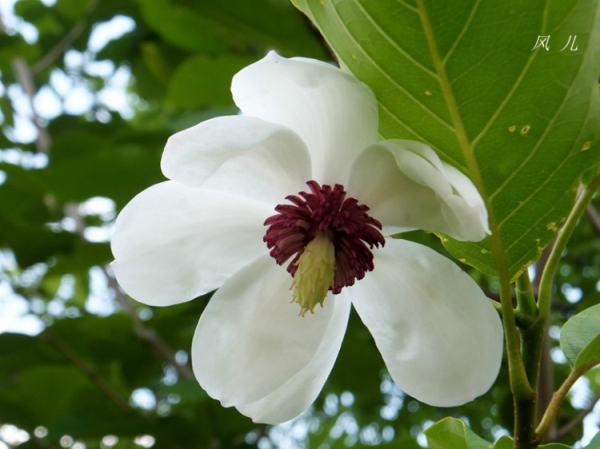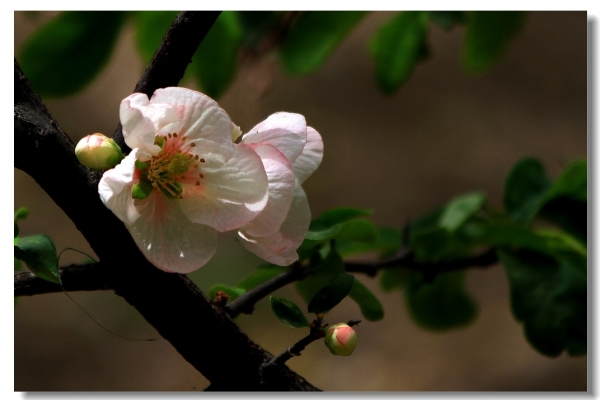Culture method of Tiannu flower
Watering
Spring and autumn season is its growing season, during this period, Tiannu flower has a great demand for water, we should water frequently to keep the soil moist.
Light
Tiannu flower can not bear high temperature, so it is best to move it to indoor breeding in summer to prevent the flowers from withering and leaves withering.

Soil
Tiannu likes to grow in fertile and decaying acidic soil, and the soil PH value is 5.5-7.
Has everyone learned the breeding method of Tiannu flower? If flower friends have any problems in the planting process, please pay attention to the four Seasons Plant Network!
The cultivation method of Tiannu Flower soil
Tiannuhua is a native "northeast flower", so it likes to grow in a fertile and acidic soil rich in rot, and the soil PH value is 5.5-7.
Temperature
Tiannu flower is not resistant to high temperature. It likes to grow in a cool environment. It is best to move it to indoor farming in summer to prevent the high temperature from causing flowers to wither and leaves to wither.
Watering
Because Tiannu likes to grow in a moist and cool environment, it is often watered to keep the soil moist to prevent it from dying because of dry soil.
Fertilizer application
The fertilization of Tiannu flower should be light and not too thick. The humus contained in the soil itself can provide good nutrients, so it is not necessary to apply too much fertilizer.
What precautions should Tiannu flower pay attention to in the process of breeding?
Culture methods and points for attention of Tiannu Flower in Chinese Literature
Latin name Magnolia sieboldii
Don't call it Xiao Hua Mulan or Tian Nu Mulan.
The plant kingdom.
Phylum angiosperm (Angiospermae)
Dicotyledon class (Dicotyledoneae)
Magnolia subclass (Magnoliidae)
Magnolia (Magnoliales)
Magnoliaceae (Magnoliaceae)
Magnolia
Plant small flower magnolia
Distribution area: the rugged mountains adjacent to Liaoning and Jilin provinces and the local mountainous areas of some provinces in East and South China.
Endangered species
Protection level 3
Florescence from April to May
Fruit period from September to October
Concomitant species of lampstand tree and Chinese goose ear jelly
Status Flower of Liaoning Province, City Flower of Benxi City
Tiannu flower, deciduous small tree, 5 to 15 cm long, with powdered leaves on the back, flowering from early June to mid-July, and ripening period from early to mid-September. Liaoning, China, is the only wild magnolia plant in China. Within Asia, South Korea and Japan are also distributed. It is an endangered plant and belongs to the national third-class key protected plant. Tiannuhua is the provincial flower of Liaoning and the city flower of Benxi, Liaoning.
1. Morphological characteristics.
Deciduous small trees, up to 10 m tall, current year's branchlets slender, ca. 3 mm in diam., grayish brown, initially silvery gray flat villous. Leaves membranous, Obovate or broadly Obovate, (6) 9-15 (25) cm long, 4-9 (12) cm wide, apex abruptly acute or shortly acuminate, base broadly cuneate, obtusely round, truncate or subcordate, upper midrib and lateral veins curved pilose, lower pale, usually brown and white multicellular hairs, scattered golden yellow spots, midrib and lateral veins covered with long white silky hairs, 6-8 on each side of lateral veins. Petiole 1-4 (6.5) cm long, covered with brown and white long hairs, stipule scar about 1 cm 2 of petiole length. Flowers and leaves open at the same time, white, fragrant, cup-shaped, dish-shaped when in full bloom, 7-10 cm in diameter; pedicels 3-7 cm long, densely brown and gray-white protruding villous, bearing spreading or slightly pendulous flowers Tepals 9, subequal, outer whorl 3 oblong-Obovate or Obovate, 4-6 cm long and 2.5-3.5 cm wide, base covered with white hairs, apex broadly round or round, inner two whorls 6, narrower, base narrowing into short claws; stamens purplish red, 9-11 mm long, anthers ca. 6 mm, two anthers adjacent, introrse longitudinally lobed, apical retuse or septum flat, not protruding, filaments 3-4 mm long Gynoecium elliptic, green, ca. 1.5 cm. Aggregate fruit red when ripe, Obovate or oblong, 2-7 cm long; follicles narrowly ellipsoid, ca. 1 cm, 2-valved along dorsal suture. Tip with a beak ca. 2 mm; seeds cordate, aril orange-red, Testa dark brown, 6-7 mm long and wide, apical pore finely pointed.
2. Habitat of origin
Produced in Liaoning, Anhui, Zhejiang, Jiangxi, northern Fujian, Guangxi. Born in a mountain area with an altitude of 1 600-2 000 meters. It is also distributed in Korea and Japan.
3. Use
Wood can be used to make farm tools, and flowers can extract aromatic oil. Beautiful flowers, long pedicels, fluttering with the wind, for the famous Chinese and foreign garden ornamental tree species. If the flower is used in medicine, the extract can be made.
4. Growth habits
Like cool, moist environment and deep, fertile soil. Suitable for shady slopes and wet valleys. Fear of high temperature, drought and alkaline soil. Born in shady slopes and valleys above 1000 meters above sea level.
5. Variety classification
There are 90 species of plants of the same genus, which are native to East Asia and North America. There are more than 30 species in China, all of which are beautiful ornamental trees.
Magnolia is a famous ornamental plant in China. Flowers first leaves open, erect, bell-shaped, fragrant.
Wangchun Magnolia, also known as Wangchunhua, flowers 2 rounds of nearly spoon-shaped, white, the outside base with purplish red.
The night lilies are also known as the night flowers. Pedicel drooping, flowers nearly globose, yellow-white, extremely fragrant at night.
Magnolia lanceolata is also known as Magnolia. The flowers are big, white and fragrant.
Purple magnolia is also known as Xinyi. The flowers and leaves bloom together or later on the leaves, the outer whorl tepals are greenish, and the inner 2 whorls tepals are purplish red.
- Prev

Culture methods of olive flowers
When watering olive flowers, it is necessary to keep the soil moist and ensure sufficient moisture. Do not dry the soil, causing olive flowers to lack of water and leaves to die. Young trees fertilizing olive flowers are mainly fertilized with nitrogen fertilizer, properly mixed with other fertilizers, and based on the principle of frequent and thin application, usually once every two months.
- Next

Cutting method of paulownia
Fine sand or perlite can be used in the branch culture soil, choose a container with holes at the bottom of the basin, keep the soil loose and breathable, choose branches and buds with 4 leaves, cut them off with fire-roasted scissors, put them into a small pit, cover the soil, pay attention to shade, keep the temperature at 18 ℃-20 ℃, and sprout in half a month.
Related
- Fuxing push coffee new agricultural production and marketing class: lack of small-scale processing plants
- Jujube rice field leisure farm deep ploughing Yilan for five years to create a space for organic food and play
- Nongyu Farm-A trial of organic papaya for brave women with advanced technology
- Four points for attention in the prevention and control of diseases and insect pests of edible fungi
- How to add nutrient solution to Edible Fungi
- Is there any good way to control edible fungus mites?
- Open Inoculation Technology of Edible Fungi
- Is there any clever way to use fertilizer for edible fungus in winter?
- What agents are used to kill the pathogens of edible fungi in the mushroom shed?
- Rapid drying of Edible Fungi

